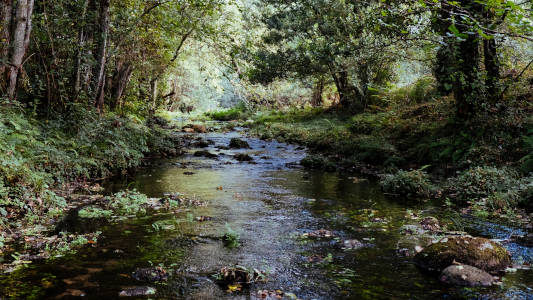What is Blue Lining?

Blue lining is a term used mostly in the fly fishing community to refer to fishing the smallest of streams. Often these very small streams are either unnamed or improperly labeled, hence just being a blue line on a map. Given their small size and unpressured waters they are typically home to native fish instead of being stocked with non-native fish.
While the term is usually associated with fly anglers catching tiny native trout, there is no blue line term police. If you want to refer to spin fishing for your region's native fish in a small unnamed creek as blue lining, fishermen will understand what you mean. Fly anglers will also blueline for other species of fish, in and outside of trout streams.
Probably the most popular incarnation of blue lining is people who blue line for brook trout in the Appalachian Mountains. This is typically done at high gradient / high elevation to filter out the likelihood of catching rainbow and brown trout. Fishing these challenging headwaters often involves hiking on steep rocks, bushwhacking, and creative casting techniques.
Gear and Tackle For Bluelining
The gear you will need is covered by your typical fly fishing setup for trout. If the water is cold or dirty, you will probably want hip or chest waders. If it is nice enough to wet wade, you will probably want a good pair of wading boots. If you want to do some fixed line fishing, options like simple poles or tenkara rods will work. If you want to fish with spinning gear, an ultralight setup will likely be ideal.
Freshwater Fishing